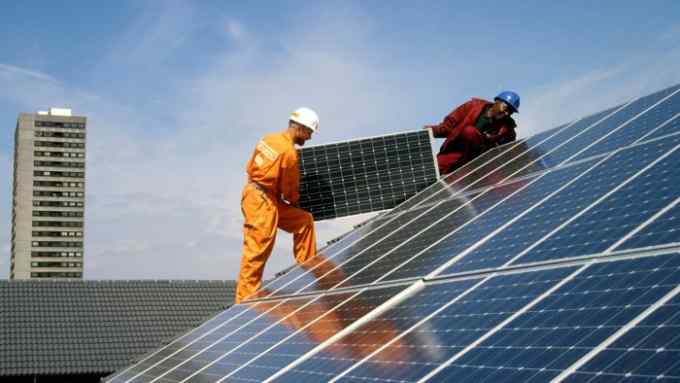LatAm political risk leaves investors wary

Roula Khalaf, Editor of the FT, selects her favourite stories in this weekly newsletter.
Assessing political risk in infrastructure projects tends to mean parsing the small print of regulatory changes, or shifts in party manifestos in the run-up to elections.
But the fire that engulfed the Chilean headquarters of ENEL, the Italian energy company, during civilian riots in 2019 was a vivid reminder of other, less predictable risks faced by investors in Latin American infrastructure.
The Santiago protests were triggered by a three-cent rise in metro ticket prices and resulted in dozens of stations in the capital being burnt and vandalised. It turned out to be a catalyst for a wave of pent-up anger against what many Chileans saw as high-priced and poor-quality public services.

The events shocked investors because they happened in a country associated with stability and steady, long-term growth.
But emergency government spending and the promise of a new constitution have since taken the heat out of the Chilean protests and infrastructure investors have once again been drawn to the South American country — attracted by projects including green hydrogen and road building.
Henrique Martins, Brazil chief executive at Brookfield, the Canadian asset manager, insists Latin America remains “one of the best opportunities in the world” because of its enormous need for infrastructure and the limited ability of governments to finance it.
Brookfield has $30bn invested in South America, mostly in Brazil, where the company runs toll roads, ports, railways, water, and gas distribution.
However, investors in the region still have to contend with risks as well as opportunities. Latin America ranks second-worst in the world for political risk after sub-Saharan Africa, according to Fitch Ratings, but does not necessarily compensate investors with higher profits because of the small size of many markets and limited growth prospects.
“Latin America’s infrastructure markets are generally characterised by elevated risk and limited rewards, undermining the region’s overall attractiveness,” Fitch concluded in its report this year, though it noted that risk levels vary widely between countries.
Colombia, Chile and Peru — among the most attractive countries for infrastructure investors over the past decade — all hold presidential elections in the next year and a half, and opinion polls show rising odds that unpredictable populists may displace more investor-friendly incumbents.
At the same time, after decades of low spending, investment in roads, ports, electricity generation, water, sewage and telecommunications is badly needed.
Total infrastructure investment in Latin America and the Caribbean averaged 2.8 per cent of GDP a year between 2008 and 2017, well below rival emerging economies. It stood at 5.7 per cent in East Asia and the Pacific, 4.8 per cent in the Middle East and north Africa, and 4.3 per cent in South Asia, according to the Inter-American Development Bank’s (IDB) Development in the Americas report of 2020.

Brazil, Colombia, Chile and Peru are now leading the efforts to make up for lost ground, hoping to attract private capital to a range of transport, sanitation and energy projects.
Adi Blum, managing director in the global energy and power infrastructure team at BlackRock, an asset manager that has invested more than $2.4bn in energy, transportation, and social infrastructure projects across Latin America, says: “We’re focused on energy first. There’s been tremendous investment throughout Latin America in renewables.”
Last year, $16.4bn was invested in renewable energy in Latin America, with the lion’s share — some $9bn — going to Brazil, according to Bloomberg data cited by the IDB. Although Mexico has slid backwards, promoting legislation that favours the predominantly fossil-fuel-powered, state-owned electricity generator, Colombia has been another country actively promoting renewables.
“Colombia is an extraordinarily positive case,” says Ariel Yepez, chief of the energy division at the IDB. “They have passed reforms to promote greater adoption of renewables . . . two years ago they carried out a very innovative new auction for renewable power, which was very successful.”
Latin America took an early lead in renewables because of its ample water resources, which led to a wave of hydroelectric dam building. Yepez also believes the region can be one of the first to substitute fossil fuels with renewables because of the wind and solar potential in the Andean countries, and Mexico in particular.

In the meantime, however, there are political uncertainties.
BlackRock’s Blum says the company takes a “partnership approach” to mitigate this risk. “An investment has to work in a 360-degree fashion,” he says. “If we’re evaluating an investment opportunity, and we have seen red flags in terms of the potential negative impact it might have on a particular constituency, then that’s certainly going to be part of our consideration.”
Even so, as the IDB noted in its infrastructure report last year, to close the quality gap with other countries, the region must do more than invest in new structures.
“It is not enough to have access to a modern bus if it arrives late, is overcrowded, and the fare over a month is equivalent to 10 per cent of the minimum wage,” the bank concluded. “Nor is it enough to be connected to the power grid if power cuts occur every week.”

Comments